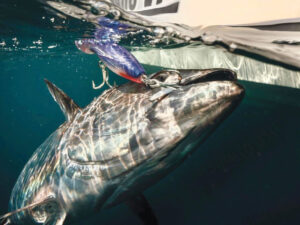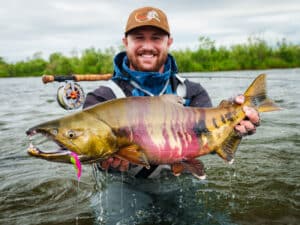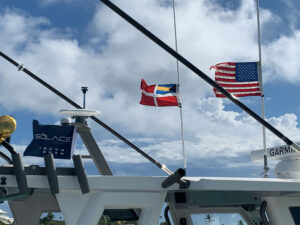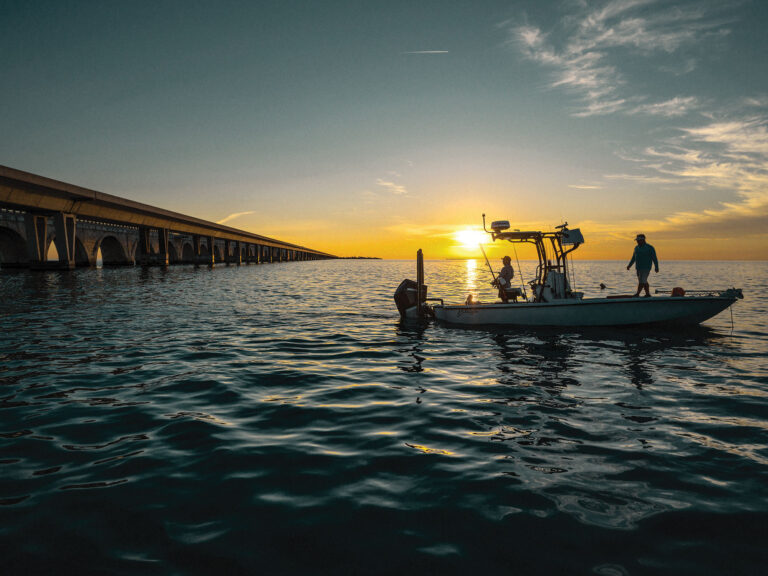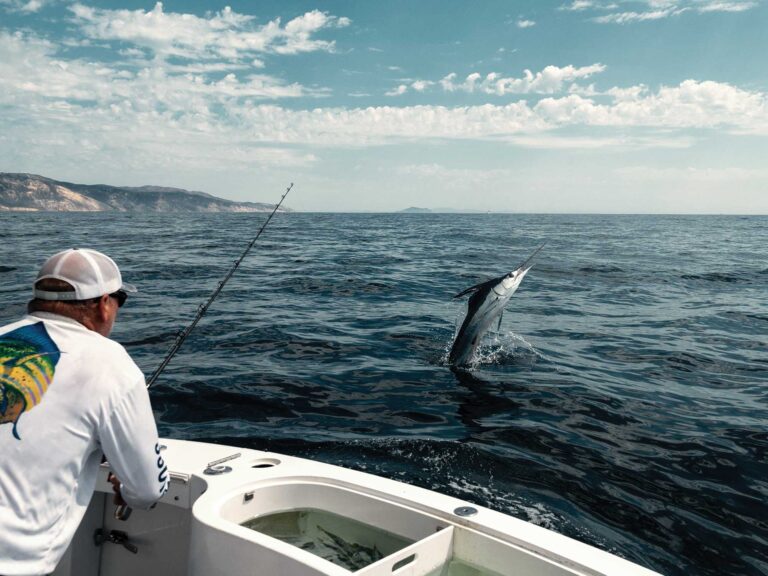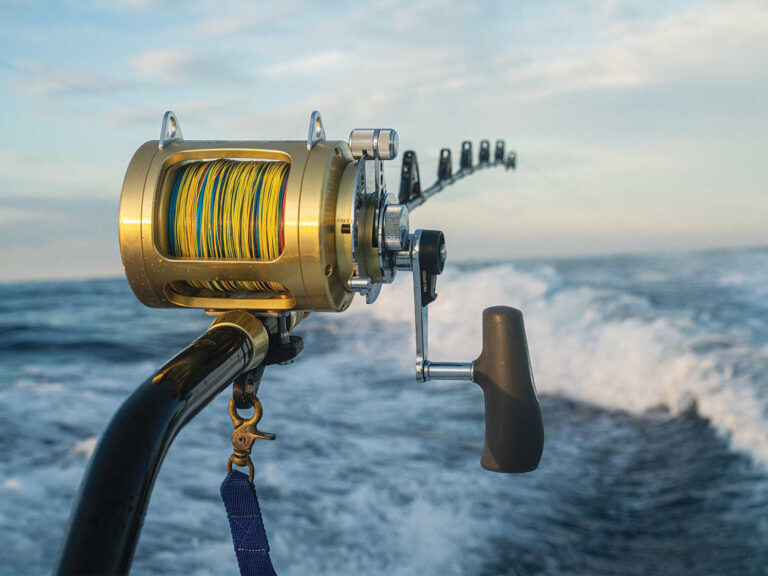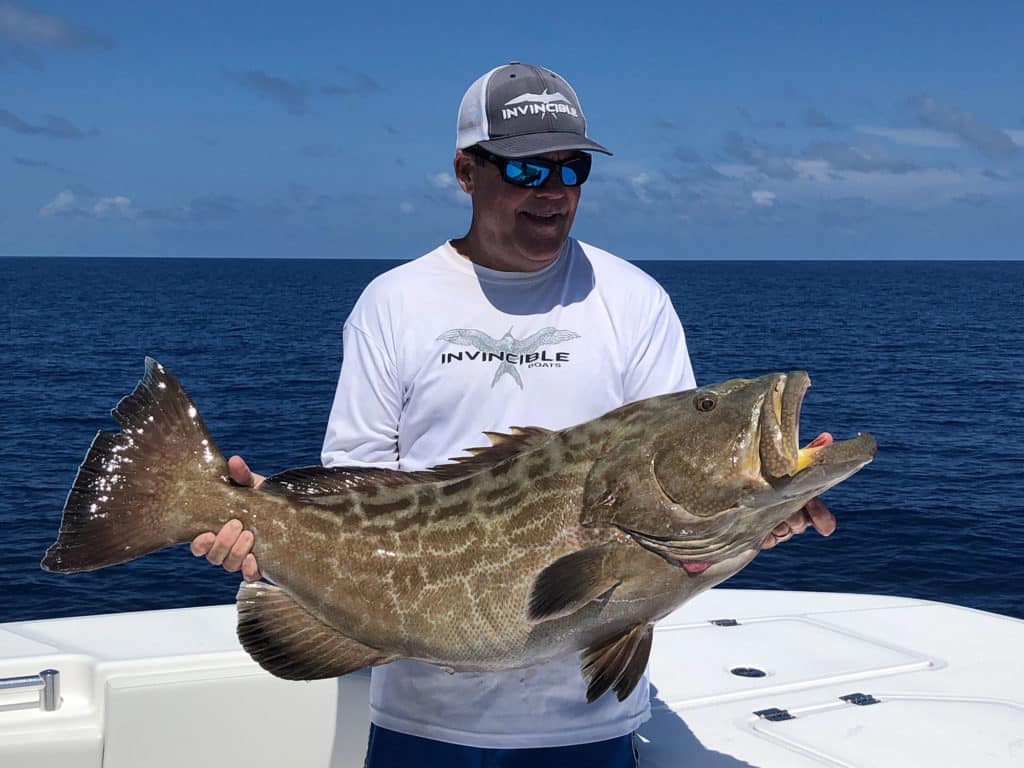
Spring magic in The Florida Keys means tarpon. And there’s no better place to find the acrobatic, hard-fighting fish than Marathon.
A 10-mile-long community in the middle of The Keys that features both prime amenities as well as an Old Florida feel, Marathon serves up hot offshore, inshore, reef, wreck and backcountry fishing. But the species known as the silver king duels for top billing.
From March through June, schools of tarpon, which often weigh more than 100 pounds, congregate everywhere from the pilings of the Seven Mile Bridge to the banks in the Gulf of Mexico. Tarpon fishing also flourishes from September through November, but for fishing guides, the spring season is sheer frenzy—with many running charters mornings, afternoons and nights.
Bridge anglers anchor their boats between pilings and drift back live mullet, which often launch airborne during a tarpon attack. Hookups can be numerous, but tarpon use the pilings to their advantage to break off and get away.
To avoid line-tangling structure, anglers can head to the grass flats in the Gulf and Florida Bay, where they cast live shrimp, pilchards and pinfish and wait for a bite. Captains set up around the banks, which are like coral reefs. On outgoing tides, small fish and crustaceans sweep through breaks in the banks, known as passes, and tarpon, as well as bonefish and permit, wait there to intercept an easy meal. Fly-rodders look for tarpon swimming along the banks and cast relatively tiny flies to them, which the big fish don’t hesitate to inhale.

During winter, the banks attract Spanish mackerel, which can be caught on live bait, jigs, spoons and flies. Reel the macks quickly to the boat, though, to avoid a pick-off by hungry goliath grouper.
Offshore fishermen troll ballyhoo or drift live bait for sailfish, dolphin and wahoo year-round. Many captains take the 27-mile run into blue water to fish the Marathon Hump, an underwater mountain that ranks among the top spots throughout The Keys. The hump attracts blackfin tuna and amberjack throughout the spring. Late spring through early fall, captains troll up blue and white marlin.
Closer to shore, reefs and wrecks hold kingfish, grouper and snapper, including yellowtail, mangrove and mutton. Those reefs, which also host a variety of tropical species, make for great diving and snorkeling. With their beautiful variety of coral formations, Sombrero Reef, Delta Shoals and Coffin’s Patch lure underwater explorers.

Given the abundance of fish, Marathon’s restaurants specialize in serving local seafood. Visitors can sample fare such as shrimp, lobster and stone crabs at the Original Marathon Seafood Festival, held March 12-13, and then overnight at a full-service resort, motel, inn or even a houseboat. Stay longer and load your itinerary with additional outdoor experiences.
Hike trails at Crane Point Hammock, or schedule a guided golf-cart tour; and then visit the Marathon Wild Bird Center. Take a tour of the Turtle Hospital, which provides respite and medical care for injured sea turtles. Swim with dolphins at the Dolphin Research Center on Grassy Key, and at Pigeon Key, learn about the incredible engineering and effort that built the railway bridges connecting The Keys more than 100 years ago.

